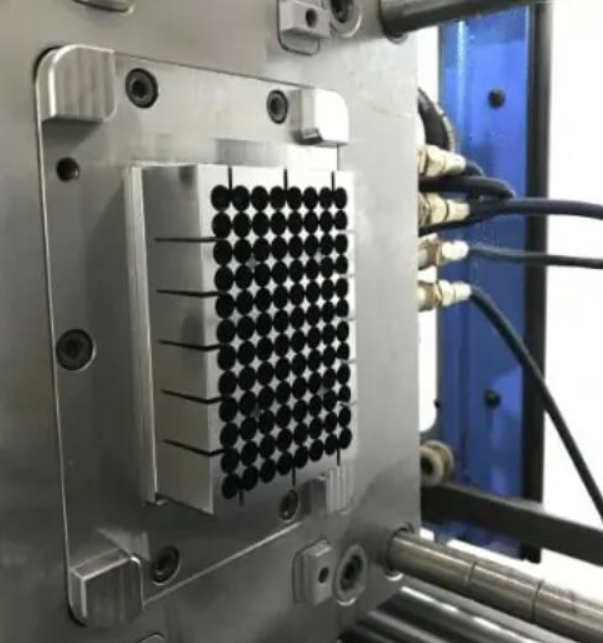Industrial Mold: Transforming Manufacturing Processes with Precision and Efficiency
In the world of manufacturing, precision and efficiency are paramount. Companies strive to produce high-quality products at a rapid pace while minimizing waste and costs. One technology that has revolutionized manufacturing processes is industrial mold.
Industrial mold, also known as injection molding, is a manufacturing process used to produce parts in large quantities. It involves injecting molten material into a mold cavity, allowing it to cool and solidify, and then ejecting the finished product. This process is commonly used for producing plastic parts, but it can also be used for metals, glass, ceramics, and other materials.
The use of industrial mold offers numerous advantages over traditional manufacturing methods. Firstly, it allows for the production of complex shapes with high precision. The mold can be designed to incorporate intricate details and features, resulting in finished products that meet exact specifications. This level of precision is crucial in industries such as aerospace, automotive, and medical, where even the smallest deviation can have serious consequences.
Secondly, industrial mold enables mass production with efficiency. Once the mold is created, it can be used repeatedly to produce identical parts. This eliminates the need for manual labor and increases production rates significantly. Moreover, the process can be automated, further enhancing efficiency and reducing the chances of errors. This makes industrial mold an ideal choice for industries that require high volume production, such as consumer electronics and packaging.
Furthermore, industrial mold offers cost savings in the long run. While the initial setup costs may be higher compared to other manufacturing methods, the economies of scale come into play when producing large quantities of parts. The cost per unit decreases as the production volume increases, resulting in significant savings. Additionally, the ability to produce intricate parts with precision reduces the need for post-processing and assembly, further reducing costs.
Another advantage of industrial mold is its versatility. It can be used for a wide range of materials, allowing manufacturers to choose the most suitable material for their products. Plastic, being lightweight and durable, is a popular choice due to its versatility and cost-effectiveness. However, industrial mold can also handle more challenging materials like metals, enabling the production of high-strength and heat-resistant components.

Despite its many advantages, industrial mold also has some limitations. The initial setup costs, as mentioned earlier, can be high, especially for complex molds. The design and fabrication of the mold require expertise and precision, adding to the overall expenses. Additionally, the process may not be suitable for small-scale production or for parts that require frequent design changes. For such cases, other manufacturing methods like 3D printing may be more suitable.
In conclusion, industrial mold has transformed manufacturing processes by offering precision, efficiency, and cost savings. It allows for the production of complex shapes with high accuracy, making it indispensable in industries that demand high-quality products. The ability to mass-produce identical parts with speed and automation increases efficiency and reduces costs. Furthermore, the versatility of industrial mold enables manufacturers to choose the most suitable material for their products. While it has some limitations, its advantages far outweigh the drawbacks. Industrial mold is undoubtedly a game-changer in the manufacturing industry, driving innovation and progress.
Vorherige:Creating High-Quality Plastic Fruit Crate Moulds for Efficient Packaging
Nächste: Creating a High-Quality Plastic Bakery Crate Mould: A Complete Guide
-
Medical injection molds: precision tools for shaping medical health
2024-12-26
In today's rapidly changing medical technology, medical injection molds, as the core tools in medical device manufacturi...
Einzelheiten anzeigen -
Exploring the Concept of Overmold in English Manufacturing Techniques
2023-12-14
Overmolding is a manufacturing technique that involves combining two or more materials to create a single, integrated pr...
Einzelheiten anzeigen -
Understanding the Factors Affecting Injection Mold Costs
2023-7-30
Injection molding is a widely used manufacturing process in which molten material is injected into a mold cavity to crea...
Einzelheiten anzeigen -
Designing an Efficient and Durable Plastic Big Crate Mould
2023-7-13
Introduction Plastic big crates are widely used in various industries for the transportation and storage of goods. These...
Einzelheiten anzeigen -
Injection Mold Design Engineering: From Concept to Production
2023-5-24
Injection mold design engineering is an important process that involves the creation of molds for the production of plas...
Einzelheiten anzeigen -
Manufacturing a High-Quality Plastic Big Crate Mold: A Guide to Efficient Production
2023-10-24
Introduction: Plastic big crates are widely used in various industries for storage and transportation purposes. To meet ...
Einzelheiten anzeigen







